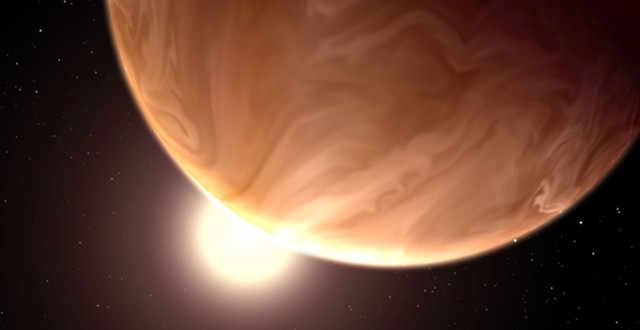Weather forecasters on exoplanet GJ 1214b would have an easy job. Today’s forecast: cloudy. Tomorrow: overcast. Extended outlook: more clouds.
A team of scientists led by researchers in the Department of Astronomy and Astrophysics at the University of Chicago report they have definitively characterized the atmosphere of a super-Earth class planet orbiting another star for the first time.
The two planets, GJ 436b and GJ 1214b, are about 40 light years away from Earth, in the constellation Ophiuchus. GJ 436b is similar in mass to Neptune, and GJ 1214b is considered a “super-Earth” planet because of its larger size. Until now, scientists have been unsure of the two planets’ atmospheres. Hubble caught images of the planets as they were passing in front of their stars. Scientists studied the starlight filtered through their atmospheres, but came up blank: neither planet had a “chemical fingerprint,” meaning that there was no unique pattern showing the presence of any particular molecule. The lack of these fingerprints could mean one of two things: either the planets have heavy cloud layers above their surfaces, or their atmospheres do not contain hydrogen and have heavier molecules present instead, which would hide their atmospheres from our view.
The scientists decided to take another look at the planets again, using Hubble. After careful study of images and data, they determined that both planets did, in fact, contain hydrogen. They believe that high cloud layers are what is hiding the planets’ atmosphere and surface from view, providing an intriguing glimpse into a pair of worlds orbiting a far away star.
Agencies
 Canada Journal – News of the World Articles and videos to bring you the biggest Canadian news stories from across the country every day
Canada Journal – News of the World Articles and videos to bring you the biggest Canadian news stories from across the country every day



